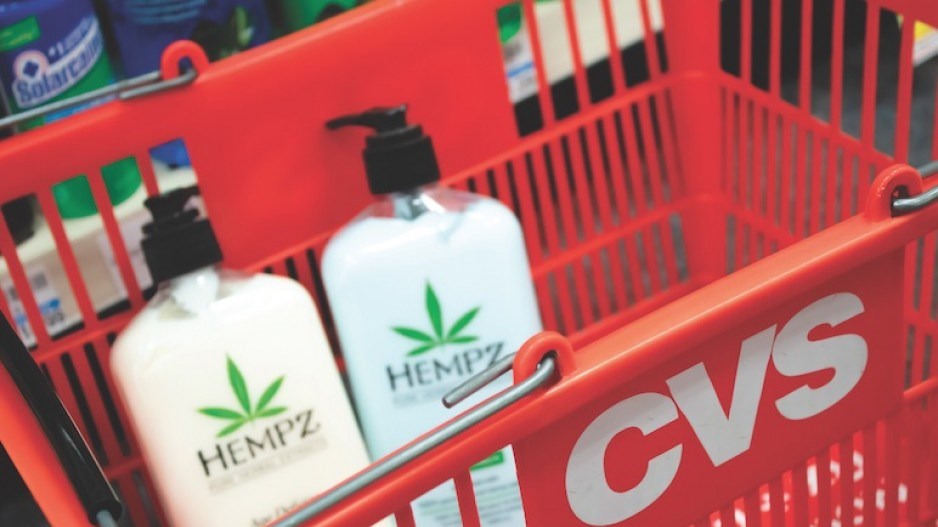Curaleaf Holdings Inc. (CSE:CURA) made history in 2018.
Not only did the company on October 24 execute the biggest non-mining corporate acquisition in B.C. in 2018, according to Business in Vancouver's newly released list, it simultaneously conducted the largest raising of capital in U.S. history for a cannabis company up to that date – slightly more than US$400 million.
In Canadian dollars, the raise’s precise total was $520,083,812, and it came as part of a reverse takeover that saw the vertically integrated grower, processor and retailer of cannabis go public on the Canadian Securities Exchange (CSE). The reverse takeover and the financing combined was valued at $5.88 billion.
The transaction, which made Curaleaf one of the largest cannabis ventures in the U.S., began when 1177679 B.C. Ltd., a wholly owned Vancouver-based subsidiary of what was known as Lead Ventures Inc., amalgamated with a venture briefly known as Curaleaf FinCo. That formed a new company, which issued 45,422,167 subscription receipts at $11.45 apiece.
Those receipts were then converted into common shares in the capital of Curaleaf FinCo, and then converted into subordinated voting shares on a one-for-one basis.
The parent, Lead Ventures Inc., changed its name to Curaleaf Holdings Inc., and it now holds all of Curaleaf’s assets.
Control of Curaleaf, however, remains in the hands of its board chairman, Boris Jordan, because he owns a super-voting class of shares.
Like other B.C. cannabis companies such as Tilray Inc. (Nasdaq:TLRY), Curaleaf has a dual-class share structure. At Tilray, for example, one class of shares allows one vote per share while the second class of shares provides owners with three votes per share.
Curaleaf’s two classes of shares are even more unequal when it comes to voting clout. One class has one vote per share, while the other has 15 votes per share.
Curaleaf CEO Joe Lusardi told BNN in October that the dual-class share structure will end in three years and that it is intended in the short term to make the company more nimble.
“It’s a very dynamic industry and we have to make very quick decisions,” he explained.
Jordan’s cannabis venture is not the first time he has operated in a rapidly changing environment where there was once a flourishing black market. He played a role in helping privatize state assets after the collapse of the Soviet Union. He co-founded and for much of the 1990s was CEO of Renaissance Capital Group, which was Russia’s first international investment bank. There he “advised on the privatization of key industrial players,” according to a Curaleaf investor presentation that was released in February.
More than 100 institutions bought into Curaleaf as part of the reverse takeover that took the company public, according to Lusardi.
Retail investors no doubt also own some shares, even though the CSE is not a large exchange and is unlikely to be on the radar of many U.S. investors.
Curaleaf, however, had little choice but to go public on the CSE.
The Massachusetts-based cannabis company operates in 11 states, with permits or provisional licences granted in two others, but it is ineligible to go public on a U.S. exchange. The Toronto Stock Exchange similarly does not allow companies that deal in cannabis in the U.S. to list on its exchange (except for those that are approved by the U.S. Food and Drug Administration to perform cannabis research).
Almost all of Curaleaf’s fast-growing revenue comes from medical-marijuana sales, but its long-term plan is to generate significant recreational-cannabis sales. Recent earnings reports show that the company is executing on its business plan.
While the shares have had a roller-coaster ride after the reverse takeover that carried them as low as $3.88, the company’s March 20 earnings report far exceeded expectations, and the share price rose almost 32%, surpassing its $11.45 initial-offering price, to $12. Shares continued to soar the next day.
Some of the investor excitement was spurred by Curaleaf’s revenue surge of 298% to more than US$77 million in 2018, even as losses deepened by more than 20 times to US$61.8 million.
Another positive sign was that many of the company’s more than 250 distinct items for sale, or store keeping units, are for products that contain cannabidiol (CBD).
The drug store chain CVS Health Corp. (NYSE:CVS) announced the same day as Curaleaf’s earnings report that it will soon sell CBD products in eight states, and that those sales will include Curaleaf products.
On March 27, Walgreens upped the ante, saying that it would stock CBD products in 1,500 of its stores. •




